It looks like you're using an Ad Blocker.
Please white-list or disable AboveTopSecret.com in your ad-blocking tool.
Thank you.
Some features of ATS will be disabled while you continue to use an ad-blocker.

Until recently they mainly dwelt in the marshland region around Basra until the troubles brought about the Iraq war, many then moving to Syria, which has also not gone well, such that now very few remain and there are only a handful of Priests or Nasurai.
Their importance for me lies in the manner in which they have preserved very ancient traditions, some suggest as far back as Sumer, whilst adapting to the spiritual changes that have taken place in the region over the millennia
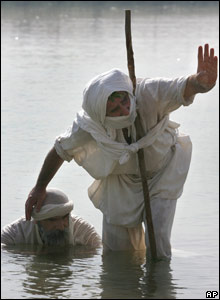 Whilst John the Baptist is recognised as being a Nasurai or Nazorean, a Mandaean
Holy person, he certainly isn't seen as a founder of the religion in any resepct, Jesus is also seen as a heretical Nasurai.
Whilst John the Baptist is recognised as being a Nasurai or Nazorean, a Mandaean
Holy person, he certainly isn't seen as a founder of the religion in any resepct, Jesus is also seen as a heretical Nasurai. Baptism in the Jordan is an all important aspect of the religion.
We seem in our search for the origin of the Sabian religion as though we dig a well with a needle .. Nine covers wrap this religion .
These covers are like nine colored filters that make it unclear for the viewer or the scholar to get a clear look at the small elements of the Sumerian religion that lay under them .

When the Sumerian political power came to an end and the Akkadian then the Amorian powers took over the region and because of the suppression exercised by the Akkadian and Babylonian religions, the Sumerian religion confined itself in an inaccessible area : The marsh land in the south of Iraq . Thus , the origin of the Sabians lost in mystery . There were secret religious rites and ceremonies , but, it was impossible to learn anything about them .
Al-Majedy sees that the Sabian religion started from this place , that is to say, from the secret places of the Sumerian religion .

One of the most remarkable aspects of their Faith is the manner in which good and evil spirits/Deities are represented, the closest comparison to this style is generally found on rock art across the globe, and often illustrates bee shaman, it is a very primitive stylization but at the same time a formative one in many cultures.
The great alluvial plains of the Tigris and Euphrates lie between the Far East and Near East and in constant contact with both. From earliest times, highroads have run from the uplands of Iran, from the steppes of Asia, from the deserts of Arabia, from the plains of India, through what is now modern Iraq, to the Mediterranean seaboard. From the first its inhabitants have been subject to influences from all quarters of the civilized globe and ruled by race after race.
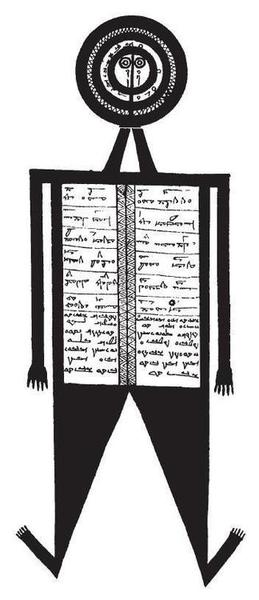
The result, a leaven of unorthodoxy amongst the intellectual, eventually spread to the masses, first, possibly, as secret heresies, and then as new forms of religion.
Here lies the importance of the Mandaeans. Extremely tenacious, while adopting the new at some far distant syncretistic period, they also conserved the old so religiously and faithfully that one can disentangle the threads here and there, and point to this as Babylonian, to that as Mazdean
In truth the Mandaeans do not adore the heavenly bodies. But they believe that stars and planets contain animating principles, spirits subservient and obedient to Melka d Nhura (the King of Light), and that the lives of men are governed by their influences. With these controlling spirits are their doubles of darkness. In the sun-boat stands the beneficient Shamish with symbols of fertility and vegetation, but with him is his baleful aspect, Adona, as well as guardian spirits of light. The Mandaeans invoke spirits of light only, not those of darkness.
The Sun and Moon boats within which will be seen the various Planetary Deities, up to ten in the Shamish boat, are one of the most remarkable aspects of their tradition, in that they seem to directly correspond to the Solar Barques of Ancient Egpyt with their attendant Ennead on board, even the manner in which they are illustrated is reminiscent of early Egyptian style.
The concept of the Heavenly ship did exist in Sumeria, it is just not very often seen illustrated, so the Mandean tradition needn't owe anything to Egypt.
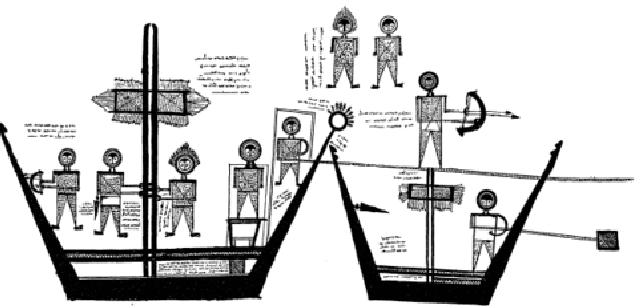
The most interesting thing about the Mandaeans though is the complexity of their texts and doctrines, whilst the Planetary Deities are seen as important they are of limited importance compared to the Great Ether, Yawer/Yahweh is also present as a lesser Deity of Creation;
O Hablaba ! deliver me from hell-beasts and from purgatory-demons and from water-penalties , and from pots that seethe, from fire and ice, from the snare of the planets, from the plots of the planets, from the slaying of the planets and from the seven hell-beasts , the chief Levier of dues and the children of darkness. Great Bihram! baptise me in thy sublime jordan and deliver me in purity to the Place of Light.

And the Seven sit in consternation
They weep and prolong their mourning
Because their mysteries are disclosed,
Because disclosed are their mysteries.
They will be brought to an end
On the great Last Day.
Behold these souls who believed in Thee
And for Thy name's sake stood by on earth
And were persecuted. Show us pure ether-air
So that we may forget earthly persecution,
That we may forget the persecution of earth
And the vexation of the wicked and liar
It's this desire to reunite with the ether which underlies Mandaean tradition, arguably tracing back to the Cult of Anu of Sumer, the most distant Deity of the Ether.
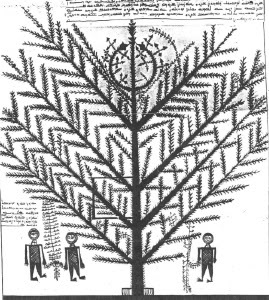
Then, when she reacheth the Seven Mysteries, servitors of the Seven go forth towards her. They come and surround her and question her
and say to her, "O soul, whence comest thou and whither goest thou ?''
I say to them, "I come from the Body, the name of which is the Earth and I am going towards the Good Consumination ". They say to me, "Whose servant
art thou and whose envoy art thou called ?'' I say to them, "I am the servitor of the Beloved Consummation, and the envoy of the vast
Ether"
The Mandaeans
Mandaean scripture
The Secret Adam
The Book of the Zodiac
What clever people (ladies?) to have survived so long.
I can't help but attribute their longevity not to secrecy, but to disinterest in power or profit. When the aim is union with the One, magic finds its way like an underground stream bursting forth from the fountainhead.
Awesome information! Thanks you so much for this thread! I have been wanting to learn more about the Mandaens, but information is sparce.
I was under the (false) impression that John the Baptist was the founder of the Mandaen's religion, but when researching baptism, I found that it was practiced for centuries, and probably passed to the Jews through the Eleusinian Mysteries schools.
I always thought that Jesus, if he existed, was born into the Nazorean sect of the Essenes. I believe that info was scrubbed from the Bible because the Nazoreans were connected to the Pythagoreans and other pagan cults, like those of Artemis, for example. The "Church of Pauline" doctrine didn't work well with those systems. I never considered that he may have been labeled heretical by these groups. Very interesting!
Eidolon23
Gorgeous thread, Ms. K.
What clever people (ladies?) to have survived so long.
I can't help but attribute their longevity not to secrecy, but to disinterest in power or profit. When the aim is union with the One, magic finds its way like an underground stream bursting forth from the fountainhead.
I have interests in the Gnostics as I believe much is left out of the bible for nefarious reasons and control. I had stumbled over the Mandeans but just as easily forgot them until Kantz mentioned she was looking into them.
The Mandaeans are a living form of Gnostic Religion.
I had recently pulled out my Art History Books (I was an Art History major in college) to prove a point on another thread (which I just gave up on! LOL) and did a little reading. In the image Kantz posted notice the top of the image...

In the Ancient artworks Men and Women were depicted as Equal, They have a Priest and Priestess overseeing or conducting a ritual, their beliefs involved both. They would preceded over ceremonies and have differentiating, but equal rites and authorities. However, each ritual could be preformed by the other unlike the patriarchal religions of today!
Due to external pressures (Extreme Religious Views of Mideastern Religions) this may no longer be the case as there are no "known" priestesses. Because of the war they are being pushed and "raped" into extinction.
Kantzveldt
The Mandaeans or Sabians...whilst happy to have been seen as John the Baptist Christians, in a region were adherence to some aspect of 'The Book' has been necessary to avoid the fate of pagans.
Thanks for another wonderful OP!
A number of sources associate John the Baptist (and Jesus) with the Essenes.
Is it your understanding that the Mandaeans (Sabians) were also associated with the Essenes -- or, are you of the conviction that the "happy...as John the Baptist Christians" was merely a label they did not openly contest or refute?
The soul is always personified as feminine;
The soul hath loosed her chain and broken her bonds;
She hath shed her earthly garment.
She turned round, saw it and was revolted
She uttered an evil curse on the being
Who had clothed her in the body.
She provoked the Framer-of-Bodies, she roused him
From the lair in which he lay. She said to him,
"Rise up, look, Framer-of-Bodies;
The hollow of thy hand is filled with water!"
The voice of the Framer-of-Bodies (is heard),
Who howleth and weepeth for himself
And saith "Woe is me that the hollow of my hand
Is filled with water!" And to her he saith
"Go in peace, daughter of the free, whom
In the house of evil ones they called handmaiden.
Go in peace, pure pearl that was transported
From the treasuries of Life;
Go in peace, fragrant one who imparted
Her fragrance to the stinking body.
Go in peace, radiant one, who illumined
Her dark house. Go in peace,
Pure and chosen one, immaculate and spotless!"
But there is also the concept of the spritual body;
(Then) from Abathur of the Scales
A saviour will come forth towards you.
The saviour that cometh towards you
Is all radiancy and light from head to foot
Like the wreath in his right hand.
And on his two arms is a robe.
Bestir yourselves! Put on your robe
I am crowned with a wreath and lay me down
In a dress in which there is no blemish.
No spot is there in the dress,
Nor is there aught missing or lacking in it.
The Life knew about me.
Adam, who slept, awoke;
He grasped me with the palm of his right hand
And gave (not?) into my hand a palmbranch.
Light cast me into darkness,
But the darkness was filled with light.
The comparisons with Christian doctrine are very strong, the major difference would perhaps be the suggestion of physical resurrection as desirable, though there is also the tradition of the spritual body in Christianity.
Behold these souls who believed in Thee
And for Thy name's sake stood by on earth
And were persecuted. Show us pure ether-air
So that we may forget earthly persecution,
That we may forget the persecution of earth
And the vexation of the wicked and liars
reply to post by abeverage
The difference of the Mandaeans to the other Gnostic groups centred on Alexandria is that they do not incorporate Greek or Egyptian elements into their texts and doctrines, or Christian, it would seem more the case they were highly influential upon Gnosticism.
reply to post by windword
There is an extensive baptismal text which concerns itself with Yahia Yubna (John the Baptist) and community.
And in the great Jordan a pure seed was formed ... and came and' W~R in the womb of ENigbai, so that from itGBa, child might; come into being, a prophet of the great Father of Glory, praised be His name! ... in the midst of the worlds, and he shall be called Yahia-Yubna, the prophet of Eu&a , the apostle,.. who dwelt at the city of Jerusalem; a, healer whose medicine was Water of Life, a healer that healeth ... (eviZ*spirit.s?) which go forth from Ruha and Adonai to destroy the physical body
Baptism text
reply to post by WanDash
The Essenes were an entirely Judaic group, there is the question of why the Mandaeans place emphasis on baptism in the Jordan, whether this relates to a Judaic connection from the time of the Babylonian exile, though it could be an entirely independent tradition, they take Yawar/Yahweh as an aspect of Ea/Enki, and the creator/progenitor of physical existence.
Production was entrusted to Yawar,
To Yawar was [the task of] construction given.
He was created Chief of mighty ones:
He implanted reproductive power in his brethren
Kantzveldt
reply to post by Eidolon23
The soul is always personified as feminine;
I removed the prayers to shorten the post, but they are very enjoyable!
Kantzveldt
reply to post by abeverage
The difference of the Mandaeans to the other Gnostic groups centred on Alexandria is that they do not incorporate Greek or Egyptian elements into their texts and doctrines, or Christian, it would seem more the case they were highly influential upon Gnosticism.
Interesting,
You would have thought they would be assimilated or at least be highly influenced and neither is the case!
Their ancient artwork is extremely primitive by comparison of the surrounding cultures of the same time period, I suppose from being such consistently small group and purposefully remaining isolated or at least remote. Even more so that they took little influence from these cultures is impressive. It reminds me of Aboriginal or extremely tribal based that I can't place my finger on right now!
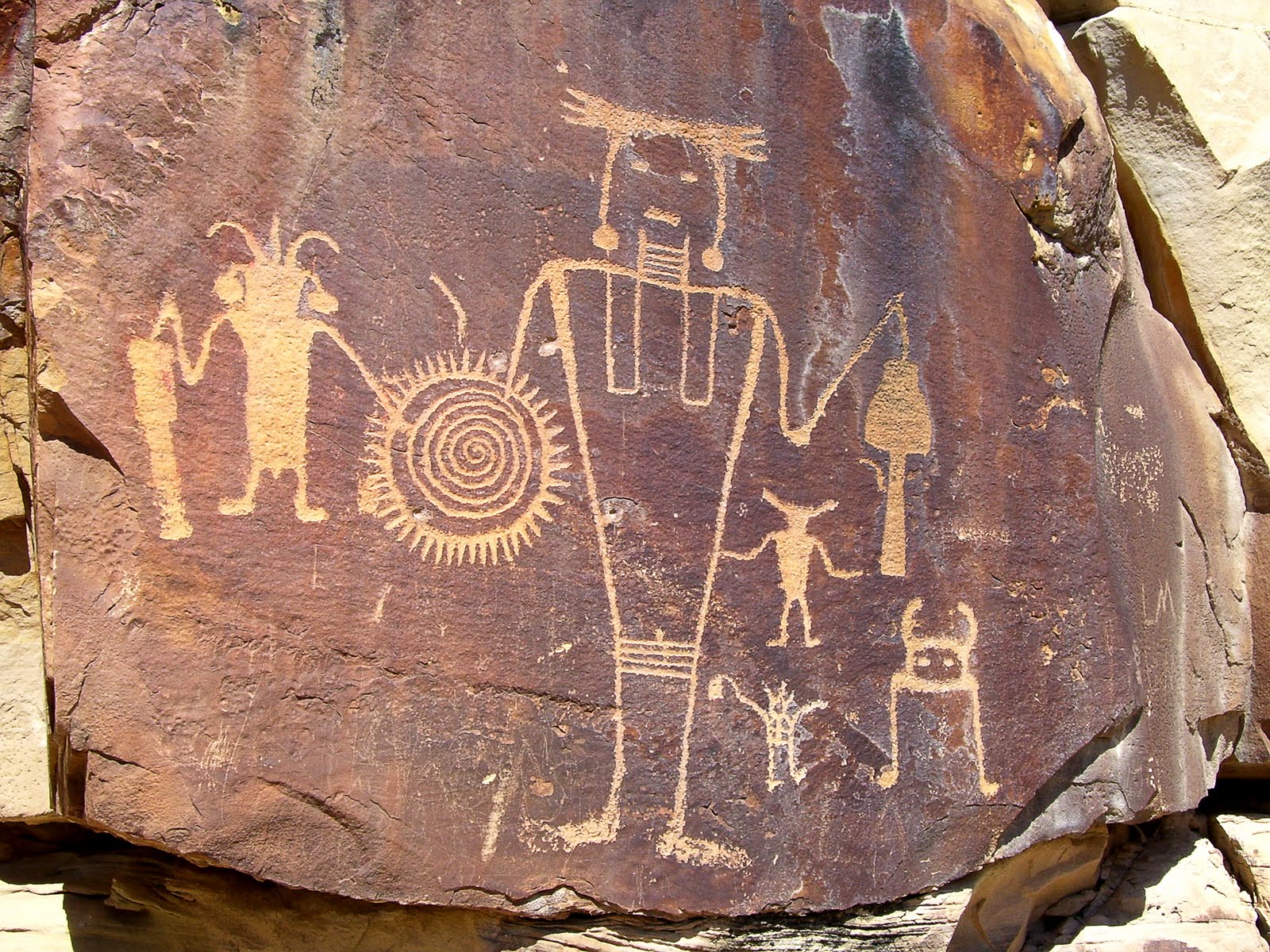
At least from an Artistic stand point I found only a passing interest in their work however on that artistic side I would very much like to see a copy of this scroll! As it would also complement my Gnostic inquires I would order this but I need pictures! LOL and I am uncertain.
Honestly there are some days I wish I pursued a degree in Archeology or at least Classical/Ancient Art...
Kantz thank you again for directing light on yet another interesting albiet slightly mysterious group!
What would have been otherwise a footnote in my studies has piqued my interest .
For anyone more interested in the Mandeans
Kantz, what is the source of the information you quoted? This is a great thread and I am enjoying it very much.
There was the tradition of the channeling of Liwat (Venus) on of the Deities seen on the solar ship.
Mandean Legend Concerning the Mountain of the Maddai:
Now the head-priest had a daughter, and he had built a sanctuary, a secret place of worship, on the mountain. Thither he was wont to go and take the girl, for he had knowledge of Liwet (Dilbat, Venus), who is a female spirit, and inhabits the star Liwet. She is so lovely to look upon that if a man sees her he swoons away. She wears a diadem of great beauty on her brow, and a wonderful perfume issues from it, so exquisite that he who smells it loses his senses and becomes unconscious. The diadem is of lights, which play and dazzle. There are wise men who see her, and there are places where they make her a sanctuary, bringing a beautiful girl or a handsome boy to it and placing him or her therein. Then they read secret incantations, and she (= Venus) descends into the girl or boy and answers the questions which are put to her. Much knowledge is to be learnt from her.
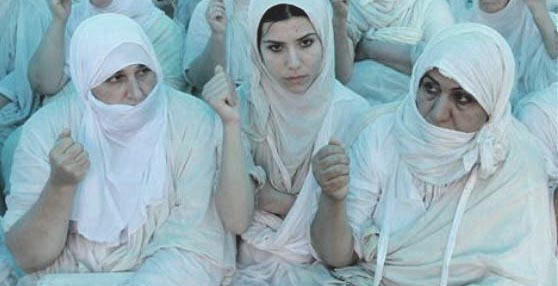
Liwet descends into a girl
The head-priest used to take his daughter into this secret sanctuary and Liwet used to descend into her. Her father used to put a glass bowl filled with water before the girl and say to her, ‘Gaze into it!’ Then he began to read incantations, read, read, read, until the glass became red, became white, became green, became blue, dī, dī, dī, dī! until the glass became like a globe of light. At that moment, a sweet and pleasant wind breathed upon the girl and she slept, and Liwet entered into her thoughts and spoke through her mouth.
And there were the popular love charms of Liwet/Libat
In the name of Libat (Venus), mistress of gods and men! He shall be brought into subjection, this man, N., neath the feet of N., woman, by the four limbs of his body, by the eight corners of his stature; his male member and his sinews are subjected, subjected are his incoming and outgoing, subjected his slaves and his handmaidens, subdued are his šids (household spirits) and his demons, subdued his amulets and idols, subdued his knowledge and understanding, subdued are the evil thoughts that are in his heart and his body, that of N. by the name of Mimhisiq Qusum, the lady that illumines them, that casts water on dry land, and on the hands of (Libat) mistress of gods and men. He shall be bound and will come: he is brought into subjection, N. by the strong bond (spell) wherewith heavens and earth were brought into subjection.

From underneath the feet of N. (woman) he will go abroad, and his liver shall be seized, and he will not go to any place other (than hers), by the name of their mistress, she whose purity is sweet, who arose from the east, who removes them, the queen whom they remove and call her and she comes, and they seek her and find her and consider (?) her, and sleeps in the firmament of Qidsar, the love-longing and marriage-maker. In the name of Libat (Venus), mistress of gods and men he is brought into subjection, and became impassioned. And the heart and mind of N. are brought into subjection beneath the feet of N. the woman. He is bound and made subject
Mandaic Love Charms
As well as jealousy charms which sort of countered the Love.
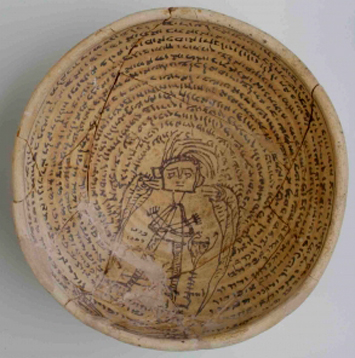
Bel is turned from Babylon and Nirigh (Mars) from Borsippa and Kiwan from his light, and Nebo (Mercury) from his father, the Arab: and Šamiš (sun) from the dwelling of the Persians and Libat (Venus) from the Indians, and all evil folk. They have bound the loins of N. with pitch: when he beholds N. (woman) he says: “Send her away, she shall not remain in my presence.” Amen, amen, selah. Read this spell seven times over pitch and (then) smear it on the door of the man, and the man and woman shall become estranged by the strength of our lord, and there will be relief and healing.
reply to post by abeverage
That's true, only the Priests would have been concerned with the illustrations within the texts, for that reason they are perhaps kept basic, though Mandaeans have the highest reputation for metalwork craftsmanship, but still they are of a strange and primitive type, a hawk like face with the wreath of crowning glory.
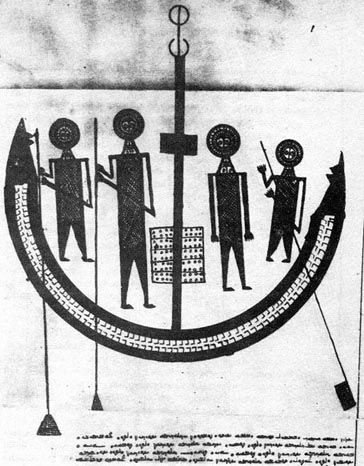
reply to post by LetsGoViking
There are the links at the bottom of the OP, some others;
Mandaean scriptures and fragments
Mandaean Gnostic Texts.
Mandaean Folklore
Mandaean texts and People
Kantzveldt
Mandaic Love Charms
WHOA...That was a bit more steamy then I had envisioned! Oh and that second part...Loins of pitch OUCH! I am thinking that would be a definite UN-Charming!
Kantzveldt
reply to post by abeverage
That's true, only the Priests would have been concerned with the illustrations within the texts, for that reason they are perhaps kept basic, though Mandaeans have the highest reputation for metalwork craftsmanship, but still they are of a strange and primitive type, a hawk like face with the wreath of crowning glory.
Ah so more a record of the rites and sacred teaching than the ascetics of culture? Pictographic instruction and learning as pursuits to the heavenly are more important that depicting life here. Representations in artwork, material belongs and wealth are not important to any of the Gnostics as far as I know, being that this is a shadow world or a training grounds so to speak, which makes much more sense!
Hawk like face with crowning glory? Horus?
Great openimg. Ill be back on a pc.
The Emergence of Hinduism from Christianity
reply to post by Kantzveldt
May Peace be upon you Kantzveldt.
I first heard mention of the Sabians (Mandaeans) when reading the Qur'an. According to Islam's holy book, the Sabians are put on-par as monotheists alongside the Jews and Christians.
Additionally, some Islamic scholars often attribute the Sabians with following the patriarch Idris, also known as Enoch, who is also equated to being both Thoth and Hermes. From this link, it is often alleged that the Sabians were followers of Hermes Trismegistus, thusly being Hermetical philosophers. There is even speculation to a Chaldean Magi origin. What is your opinion of this association, regarding your research into the Sabians?
S&F!
This is what will become of a woman born under Pisces. She will be beautiful and her eyes prominent,~ her eye-sockets deep, and her nose comely. Her eyes are eloquent, and lovely, her brows noble and beautiful and her hair curly. She will have delicacy of limb. In mind she is wise and she will be sparkling of wit.
She will become vain of spirit, and subdues words that she hears,’ and laughs at men.
With a money-bag, Aries. This is what will become of her.’ She will be mistress of an estate when she has plenty she is not elated and when she haa not, it does not depress her.
With brethren, Taurus. It is decreed that the older she gets, the fairer her destiny. .She will bring danger of misfortune to her brothers, but she will pray to the gods that it may be well
With poor luck, Aquarius+ It is decreed that she will be under the auspicious influence of Jupiter and Venus. She will prosper in all that she does, because Jupiter and Venus are good stars.
reply to post by Sahabi
The Essenes placed importance on the Book of Enoch, but i'm not aware of the Mandaeans having interest in it, there is also no mention of the likes of the Hermetic Thoth as found in the Gnostic Sects of Egypt, the foundations of their belief were established before that era. It is the Mazdaeans who are generally associated with the Magi.
Hello there again Kantzveldt.
I've never researched into the Sabians (Mandeans) beyond Islamic citations, until your thread piqued my curiosity. To add to the discussion, I've found the root for the Hermetical associations mentioned in my first reply.
There were communities along the modern-day border region of Turkey and Syria, centralized around the ancient city of Harran, that held many links to the Mystery Schools, star worship, alchemy, Hermeticism, as well as Semitic, Yazidi, Akkadian, Assyrian, Sumerian, Babylonian, and Chaldean traditions.
In order to be sparred from the ever-conquering and converting Islamic Empire,.... these inhabitants of Harran auspiciously took on the outer name of Sabians. These Harranian Sabians did not share the same beliefs as the Mandean Sabians.
Peace.
One aspect of interest to me is that of Ruha the Mandaean tradition as a feminine spirit that governs the seven planets, a spirit of the rainbow as it were in terms of the planetary colour symbolism, that also correlates to the Holy Spirit.
This tradition is found in Islam as well as Judaism, and of course Christianity.
The Qur'an uses two terms "Ruh-Allah" and "Ar-Ruh-Al-Qudus" for the Spirit of God. Such is the case in the following references: "We gave unto Jesus, son of Mary, clear proofs [of Allah's sovereignty], and we supported him with the Holy Spirit [ar-Ruh-al Qudus]," (Surah 2, Al-Baqarah, The Cow: 87).
"When Allah saith: O Jesus, son of Mary! Remember My favour unto thee and unto thy mother; how I strengthened thee with the Holy Spirit [al- Ruh al-Qudus], so that the Scripture and Wisdom and the Torah and the Gospel . . . and thou didst heal him who was born blind and the leper by My permission; and how thou didst raise the dead, by My permission" (Surah 5 Al-Ma'idah, The Table Spread: 110).
Ruha
In Mandaeanism Ruha and the seven planetary aspects she governs are seen as lesser aspects of Creation, the term Quadash means 'Holy'
In Mandaeanism, this name refers to an evil female spirit allied with the Jewish God (whom the Jewish call Adunay). They believe that Ruha d-Qudsha founded Jerusalem and, together with her sons, the seven planets.
Ruha d-Qudsha
I think it must have been the rehabilitation of Ruha d-Qudsha in conjunction with a Cult of Adonai that would have made Yeshua the Nazorean heretical to the Mandaeans.
Focuses on the Mandaean mythological figure of Ruha (Spirit), who is presented largely as a leader of the forces of darkness opposing those of the Lightworld. She has been traditionally regarded as evil, although there are good reasons to regard her as a fallen wisdom figure. It examines the Mandaean stories in which Ruha appears as ambiguous (double‐sided or dual) or in a positive light. Four sets of mythological traditions, taken from a variety of texts, illustrate the points made: the descent of the ‘utra (Lightworld (heavenly) figure) Hibil Ziwa (Radiance) into the Underworld; the creation of Tibil (the earthly world) and of the human beings; Ruha and the ‘utras; and Ruha's self‐revelations and identifications with Lightbeings.
Enigmatic Ruha
A rehabilitation of Spirit Ruha in Mandaean Religion.
The above work points out the ambivalent nature of Ruha to the Mandaeans, that she can be understood of as the Bride of the Liberator, but the doctrines are astonishingly complex. There are though many comparisons to be made between Ruha and Inanna.
Kantzveldt
reply to post by Sahabi
One aspect of interest to me is that of Ruha the Mandaean tradition as a feminine spirit that governs the seven planets, a spirit of the rainbow as it were in terms of the planetary colour symbolism, that also correlates to the Holy Spirit.
This tradition is found in Islam as well as Judaism, and of course Christianity.
The Qur'an uses two terms "Ruh-Allah" and "Ar-Ruh-Al-Qudus" for the Spirit of God. Such is the case in the following references: "We gave unto Jesus, son of Mary, clear proofs [of Allah's sovereignty], and we supported him with the Holy Spirit [ar-Ruh-al Qudus]," (Surah 2, Al-Baqarah, The Cow: 87).
"When Allah saith: O Jesus, son of Mary! Remember My favour unto thee and unto thy mother; how I strengthened thee with the Holy Spirit [al- Ruh al-Qudus], so that the Scripture and Wisdom and the Torah and the Gospel . . . and thou didst heal him who was born blind and the leper by My permission; and how thou didst raise the dead, by My permission" (Surah 5 Al-Ma'idah, The Table Spread: 110).
Ruha
In Mandaeanism Ruha and the seven planetary aspects she governs are seen as lesser aspects of Creation, the term Quadash means 'Holy'
In Mandaeanism, this name refers to an evil female spirit allied with the Jewish God (whom the Jewish call Adunay). They believe that Ruha d-Qudsha founded Jerusalem and, together with her sons, the seven planets.
Ruha d-Qudsha
I think it must have been the rehabilitation of Ruha d-Qudsha in conjunction with a Cult of Adonai that would have made Yeshua the Nazorean heretical to the Mandaeans.
The above work points out the ambivalent nature of Ruha to the Mandaeans, that she can be understood of as the Bride of the Liberator, but the doctrines are astonishingly complex. There are though many comparisons to be made between Ruha and Inanna.
edit on 9-10-2013 by Kantzveldt because: (no reason given)
I found Ruha a most interesting character(?) she plays sort of the tragic anti-heroine. Something like a Kali like Goddess.
Ruha is most definitely that! She seems to be a force of darkness but one you want to feel sorry for and even admire. I found myself at least from what I have read of A Rehabilitation of Spirit feeling sympathy for her (Dragon Babies never seeing your "Real Parents"...sad stuff)
I have heard that the Holy Spirit was of female manifestation within Catholicism, but I am not all that familiar with their doctrine. Would it not be the same as a Holy Mother? I know the LDS (MORMONS) believe in a Heavenly Mother but do not have a lot definition in their teachings and scriptures.
I found it ironic(?) that Hibil was led through 7 levels of the Underworld reminded me A LOT of Inanna's descent to the underworld although with more clothing and less hooks (as far as I know?)
It reminds me that you cannot know the light unless you have been in darkness.
-
Russian intelligence officer: explosions at defense factories in the USA and Wales may be sabotage
Weaponry: 25 minutes ago -
African "Newcomers" Tell NYC They Don't Like the Free Food or Shelter They've Been Given
Social Issues and Civil Unrest: 1 hours ago -
Russia Flooding
Other Current Events: 2 hours ago -
MULTIPLE SKYMASTER MESSAGES GOING OUT
World War Three: 3 hours ago -
Two Serious Crimes Committed by President JOE BIDEN that are Easy to Impeach Him For.
US Political Madness: 4 hours ago -
911 emergency lines are DOWN across multiple states
Breaking Alternative News: 4 hours ago -
Former NYT Reporter Attacks Scientists For Misleading Him Over COVID Lab-Leak Theory
Education and Media: 6 hours ago -
Why did Phizer team with nanobot maker
Medical Issues & Conspiracies: 6 hours ago -
Pro Hamas protesters at Columbia claim hit with chemical spray
World War Three: 7 hours ago -
Elites disapearing
Political Conspiracies: 9 hours ago
-
British TV Presenter Refuses To Use Guest's Preferred Pronouns
Education and Media: 16 hours ago, 17 flags -
Go Woke, Go Broke--Forbes Confirms Disney Has Lost Money On Star Wars
Movies: 11 hours ago, 13 flags -
Pro Hamas protesters at Columbia claim hit with chemical spray
World War Three: 7 hours ago, 11 flags -
Elites disapearing
Political Conspiracies: 9 hours ago, 8 flags -
Freddie Mercury
Paranormal Studies: 11 hours ago, 7 flags -
Nirvana - Immigrant Song
Music: 15 hours ago, 5 flags -
A Personal Cigar UFO/UAP Video footage I have held onto and will release it here and now.
Aliens and UFOs: 9 hours ago, 5 flags -
African "Newcomers" Tell NYC They Don't Like the Free Food or Shelter They've Been Given
Social Issues and Civil Unrest: 1 hours ago, 5 flags -
Two Serious Crimes Committed by President JOE BIDEN that are Easy to Impeach Him For.
US Political Madness: 4 hours ago, 4 flags -
Former NYT Reporter Attacks Scientists For Misleading Him Over COVID Lab-Leak Theory
Education and Media: 6 hours ago, 4 flags
-
Russian intelligence officer: explosions at defense factories in the USA and Wales may be sabotage
Weaponry • 4 • : TimBurr -
African "Newcomers" Tell NYC They Don't Like the Free Food or Shelter They've Been Given
Social Issues and Civil Unrest • 4 • : GENERAL EYES -
The Acronym Game .. Pt.3
General Chit Chat • 7722 • : bally001 -
Two Serious Crimes Committed by President JOE BIDEN that are Easy to Impeach Him For.
US Political Madness • 7 • : Disgusted123 -
Russia Flooding
Other Current Events • 1 • : ksihkahe -
Running Through Idiot Protestors Who Block The Road
Rant • 107 • : FlyersFan -
Russia Ukraine Update Thread - part 3
World War Three • 5694 • : F2d5thCavv2 -
-@TH3WH17ERABB17- -Q- ---TIME TO SHOW THE WORLD--- -Part- --44--
Dissecting Disinformation • 518 • : Guyfriday -
British TV Presenter Refuses To Use Guest's Preferred Pronouns
Education and Media • 50 • : sine.nomine -
MULTIPLE SKYMASTER MESSAGES GOING OUT
World War Three • 12 • : Zaphod58
